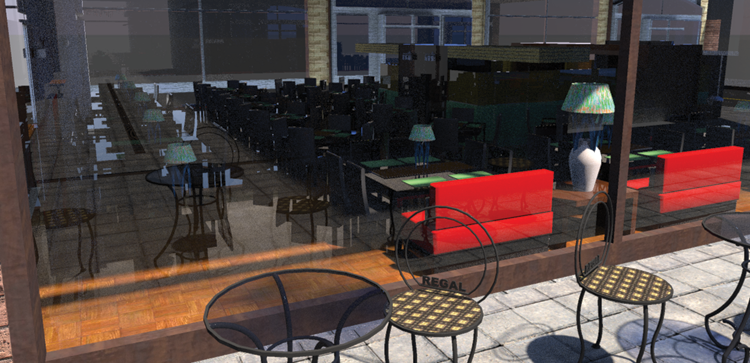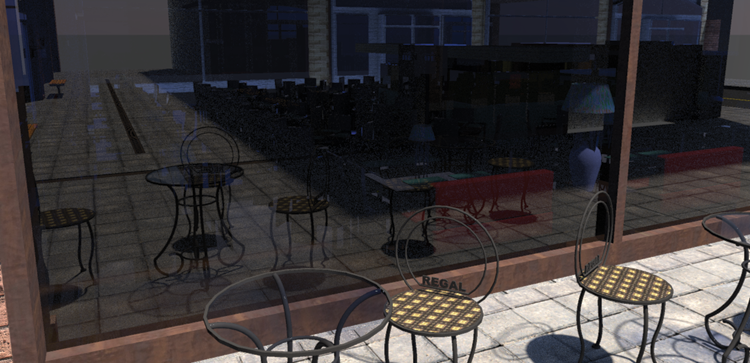Transparency
Transparent materials have a range of opacity and reflection. The more transparent a material, the less reflective it will be (Fig. 21.28, Fig. 21.29). IRPs also allow transparent materials to refract light: light passing through a see-through surface bends and distorts, depending on the type of surface. For example, when you look through a glass of water, the world becomes distorted and warped due to refraction.
Fig. 21.28: The glass is set with a higher opacity that allows more light to pass through and illuminate the interior.

Fig. 21.29: The glass is set to be less transparent, causing it to be more reflective.

Get Rendering in SketchUp: From Modeling to Presentation for Architecture, Landscape Architecture and Interior Design now with the O’Reilly learning platform.
O’Reilly members experience books, live events, courses curated by job role, and more from O’Reilly and nearly 200 top publishers.

